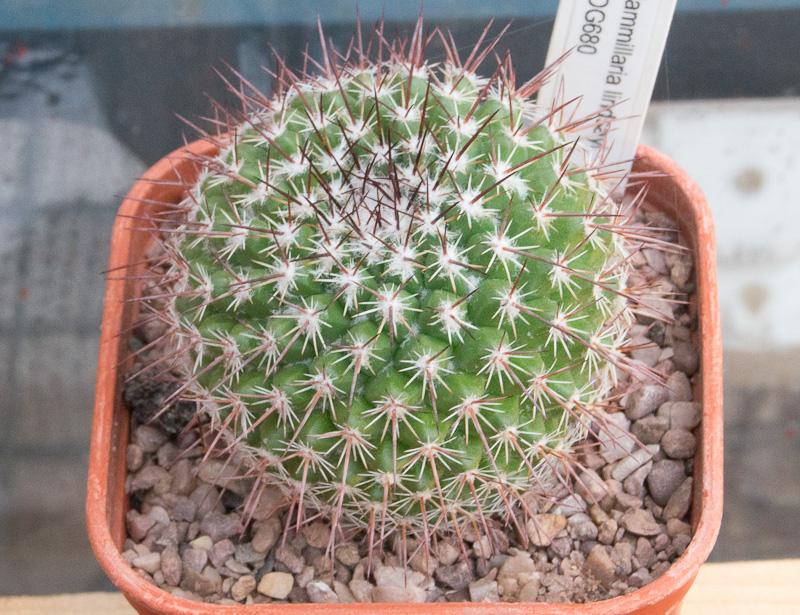
Mammillaria of the Month
(click here for previous Mamms of the Month)
Mammillaria lindsayi

Photo: Plant in Cultivation: M. lindsayi ROG680 Copyright: Chris Davies 2011
|
This is a plant of Mammillaria lindsayi ROG680, found by Helmut Rogozinski in the Río Chínipas, Presa Huites, Sinaloa, Mexico. Mammillaria lindsayi is a name which has become somewhat confused as to its proper application over the years since its naming for George Lindsay by Craig in 1940 in the CSSA Journal. It was described in Craig's monograph as forming large clumps up to 1m wide, each individual head being globular with a flattened and sunken apex, to about 15cm wide and high. Its tubercles are arranged in 13 and 21 spirals, conical quadrangular but not angled, keeled ventrally 6-10mm long, 5-7mm wide a the base. The areoles are oval, to 2mm wide, with scant brownish felt in youth only. The axils have dense white wool which nearly covers the tubercles in the flowering zone, with also up to 8 tortuous white bristles. Central spines number from 2 to 4, mostly 4, 4-12mm long, the upper 2-3 shortest, the lower one longer and heavier, all acicular, straight, smooth, stiff, bulbous at the base, light golden brown to somewhat reddish, becoming grayish horn with age, spreading. Radial spines number from 10-14, 2-8mm long, the upper 3 or 4 are the shortest, very slender acicular, all straight, smooth, the upper white and the lower tan to golden yellow. The flowers are yellow, tubular, opening for several days during sunny periods, 15-20mm long and 10mm wide. This description has been given in full, because the plant that has entered many collections as Mammillaria lindsayi, particularly bearing Lau collection numbers, is not currently viewed as being Mammillaria lindsayi, but another and relatively newly named species. There are various collections of Mammillaria lindsayi in recent years, and these show that the body colour varies from a grey-green to a bright green, and the spination from that shown in th epicture to a predominantly yellow colour. Some forms of M. lindsayi have been confused by collectors with M. marksiana and also M. canelensis, buyt the duo of Rogozinski and Plein appear to have shown that these are all one species, widely separated from other similar species by the deep river valleys and high mountains of the Sierra Madre Occidentale..
|